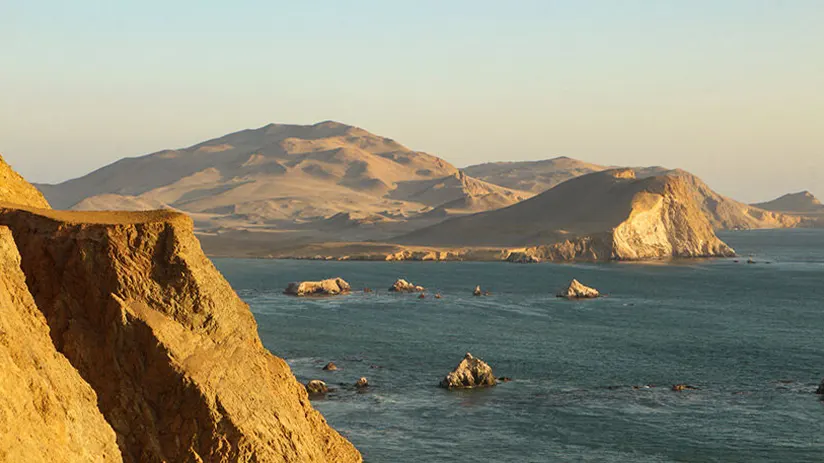Within four hours outside the south of Lima, on the desert plain between the Andes Mountains and the Pacific Ocean. Massive dunes meet the edge of the Pacific Ocean, hosting astonishing marine biodiversity, quaint beaches, and charming landscapes.
People refer to Paracas National Reserve as a paradise for several reasons. Paracas offers a fantastic setting for spending quality time with family and friends. It boasts stunning natural beauty, provides a range of engaging activities, and delivers exceptional services. Whether you’re seeking relaxation, adventure, or a unique and enchanting experience, this destination has something for everyone.
That is why we and our colleagues from Machu Peru Travel have prepared a short article about this fantastic place.
Everything you need to know about the Paracas National Reserve
- What is the Paracas National Reserve?
- History of National Reserve
- Paracas culture
- National Reserve location
- Main Paracas activities
- How to get to Paracas
- What to bring
- When to visit
- Where to stay
What is the Paracas National Reserve?
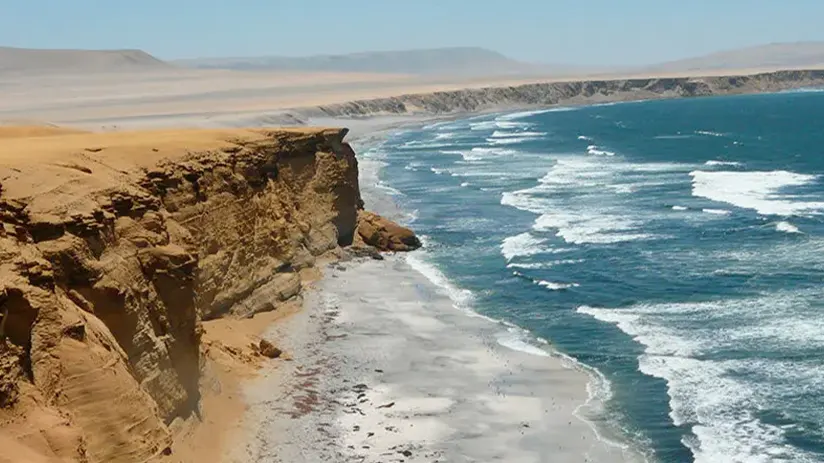
If you want to enjoy marine wildlife and paradise landscapes. You must visit one of Peru’s most frequented places in Peru. Many tourists wish to appreciate these without entering the Amazon. We refer to Paracas (a Quechua noun meaning sand rain; Para means rain, and Aco means sand).
The Paracas National Reserve is a protected natural area created on September 25, 1975. The Peruvian government conserves a representative sample of the marine ecosystems of the cold sea of the Peruvian Current. Specialists consider the Peruvian Sea the wealthiest and most productive sea on earth.
More than 400 species inhabit the Paracas coastline. It is the perfect example of marine biodiversity in Peru!
History of National Reserve
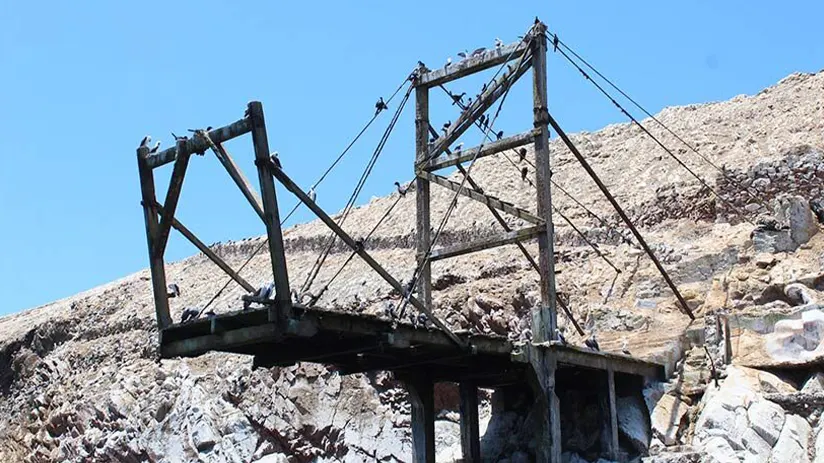
The National Reserve, founded in 1975, became an important spot for migratory birds to rest and feed. In 1991, authorities designated it a regional reserve for shorebirds. This was part of the Wetlands for the Americas program, part of the Hemispheric Network.
Only one year later, in April 1992, the Convention Relative to Wetlands of International Importance. Paracas is famous for its unique wildlife, including sea lions, Humboldt penguins, boobies, and guano birds.
Paracas culture
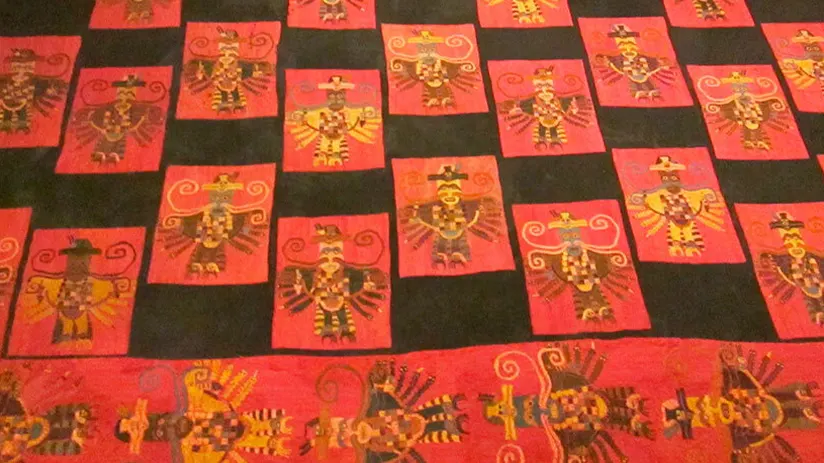
The Paracas, a civilization before the Incas (700 B.C.–200 A.C.), learned to tame one of the driest deserts in the world, located 260 kilometers south of the current Lima.
This culture can be studied in two periods. The Paracas-Caverns (700 B.C.–200 B.C.) Long ago, people buried their mummies in cone-shaped caves, wrapped in thin blankets deep underground. This is how the Paracas cloaks became famous.
Paracas-Necropolis (200 B.C. – 200 A.C.) When its inhabitants buried the mummies in elaborate, deep, rectangular caverns resembling an underground cemetery, Julio Cesar Tello, the father of Peruvian archeology, discovered them in 1925 in the current National Reserve.
Most museums throughout Peru, such as the Larco Museum, have received the area’s cultural relics. However, the reserve still allows visitors to visit the more than 5,000-year-old necropolis.
National Reserve location
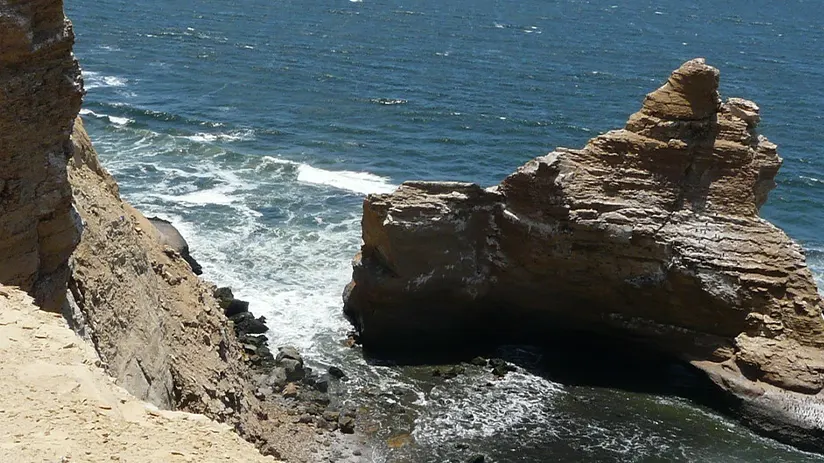
The national reserve of Paracas is 162 miles away on the south coast of the Peruvian capital, Lima. It is located along the Panamericana Sur highway and has an extension of 217,594 hectares. Most of it consists of water from the Pacific Ocean coastline and aquatic biodiversity. On the other hand, the earth part constitutes one of the aridest deserts on the planet.
Regarding the weather in Paracas, this natural reserve has an average temperature of 77ºF during the year. Hard rays of sun and sand blizzards, similar to sand rains, will accompany visitors throughout the year. These blizzards can reach 25 km. per hour up to 60 km. per hour.
For this reason, the area was called a Quechua named Paracas. (Para means rain, and Aco means sand), without mentioning that it rarely rains in the area (if not ever). Note that you can find fresher weather between June and August.
You can practice water sports like kitesurfing, paddleboarding, windsurfing, or kayaking on the Paracas beaches. Water is cold most of the year, especially from July to October when temperatures drop between 61ºF and 63ºF. On the other hand, the average summer water temperature (November to April) is around 70ºF. For this reason, in both cases, it is essential to wear wetsuits when submerging or practicing water sports.
Main Paracas activities
1. Tour the Ballestas Islands
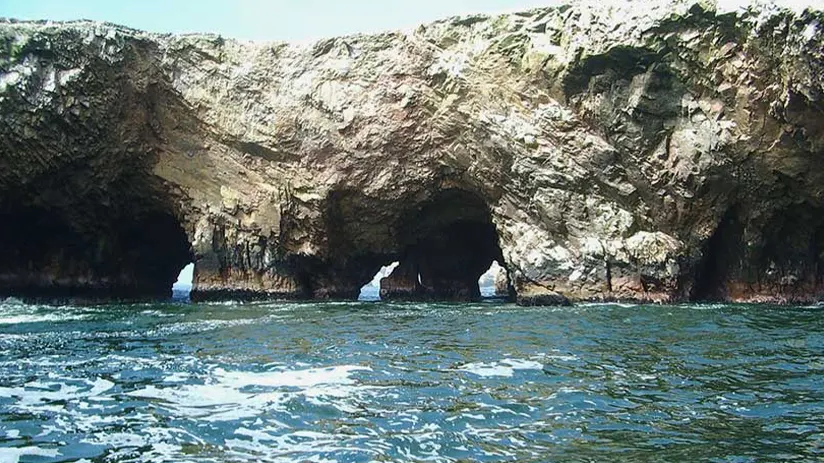
Suppose you ask us what is unique about the National Reserve of Paracas. In this situation, the unique thing about the National Reserve is the unusual rock formations in the ocean. Animals like sea lions, seals, penguins, birds, pelicans, albatrosses, seagulls, and humpback whales live and rest there. We refer to the Ballestas Islands.
The Ballestas Islands are north of Paracas and part of the National Reserve System. They include islands, islets, and Guano Points but are not in the National Reserve. Tour companies commonly include visits to the islands in their tours of the area.
This boat tour leaves from Pisco or Paracas ports and lets you see animals up close. The animals have grown accustomed to people and often rest on the rocks. It’s a great way to experience nature and relax on the water. The tour usually lasts 02 hours and 30 minutes, with 45 minutes of watching. The Ballestas Islands are part of a National Reserve, so visitors cannot land on them.
2. Get a tan on Paracas beaches
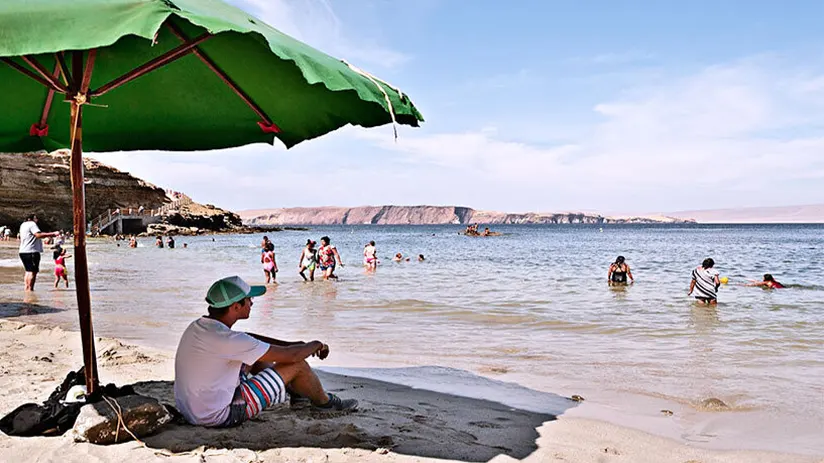
There are many beautiful Peru beaches, especially in Paracas. Some areas in the reserve are only for tourists to relax on the sand, sunbathe, or do small activities, but not for other uses. Following, we can find the most interesting Paracas beaches:
- Las Mina’s Beach: The best beach in the National Reserve. The beach has soft sand and calm waves, perfect for relaxing swims and spending time with family and children.
- The Raspon beach: Popular beach for swimming and sunbathing.
- La Roja beach: This little but quaint red sand beach offers a view of the giant Paracas cliffs, making it perfect for sunbathing.
- Yumaque Beach: This was perfect to camp; however, for protection reasons, camping is currently prohibited.
- The Supay beach: It was named in honor of an ancient demon of Peruvian mythology, Supay. Visitors can take long walks and practice craft fishing on the long beach on the slopes of Paracas cliffs.
3. Biking in Paracas
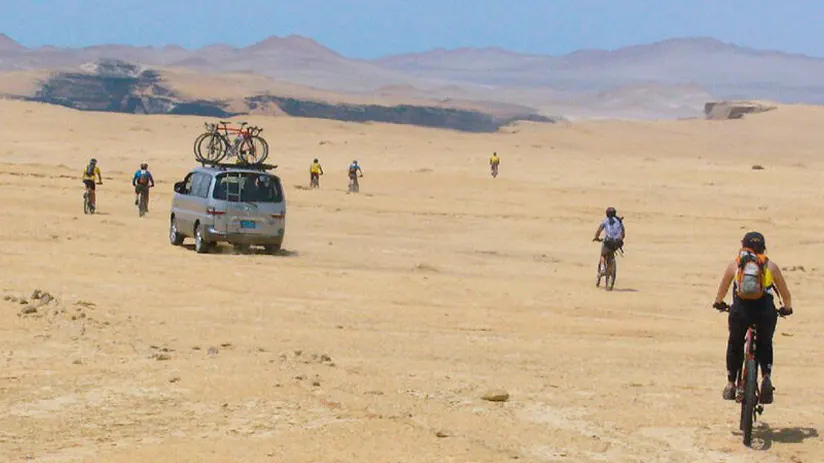
One of the best ways to experience the vast Paracas desert is on a fun bike ride. Several tour companies in the city rent bicycles, and specific lodgings offer this opportunity.
Leaving early in the morning is advisable to avoid intense heat, but any time is ideal for cycling. The prices are pretty accessible, and you can decide calmly with many options. If you are on a Honeymoon in Peru, walk with your partner through the incredible Paracas desert.
4. Paracas scroll by yourself
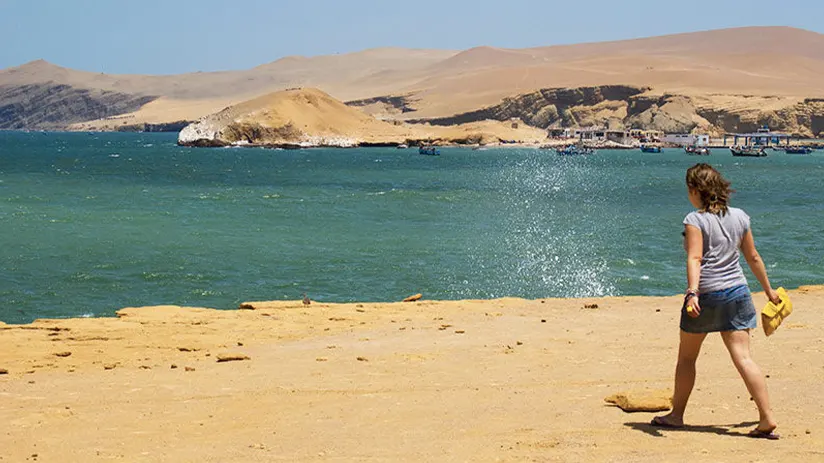
If you don’t know, you can also hike by yourself. Some paths follow the parallel Paracas coastline and lead to beaches and hidden places of the Nature Reserve. However, these are poorly signed, and getting lost is very easy.
For this reason, we suggest obtaining a detailed map of Paracas or hiring a local tour guide before starting this activity.
On the other hand, ATVs in Paracas are another great way to enjoy its landscapes. In this version, the instructor guide is the subject acting accompanying. The travel agencies in the same town of Paracas or we will gladly assist you with this experience.
5. Sandboard and dune buggy
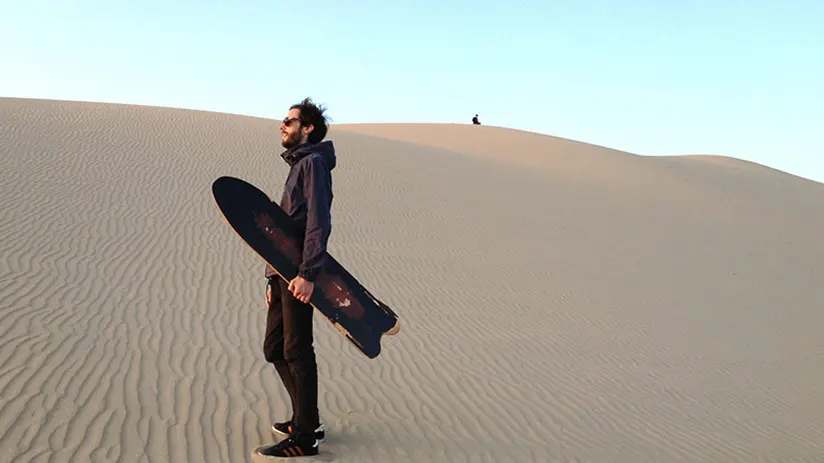
Peru‘s desert coast has big dunes, which are great for fun activities. One activity is sandboarding in Paracas, where you slide down the dunes on a board. Another is buggy riding, which involves fast cars driving up the dunes.
There are many exciting adventures to enjoy in Paracas. These activities are perfect for enhancing wildlife tours in the reserve. Paracas is famous for its desert, dunes, beautiful beaches, and memorable experiences.
6. Water sports
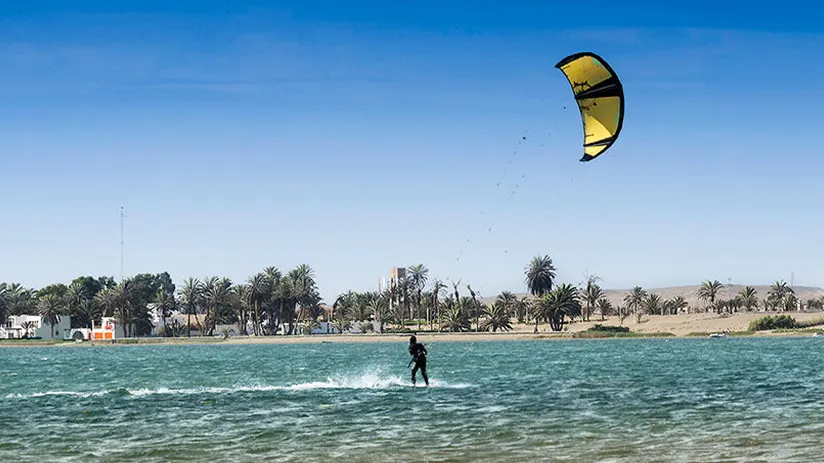
Paracas is, without a doubt, synonymous with adventure and adrenaline. But sandboarding is not the only thing you can enjoy inside the Paracas National Reserve.
Peru has excellent kitesurfing spots due to solid desert winds and flat seas, especially from November to April. The best time to kitesurf is usually in the afternoon when the winds are more vital. So, the perfect time to practice kitesurf in Paracas is from noon to sunset. The same weather conditions can be taken advantage of practices of Paddleboard, Windsurf, or Kayak.
7. Paraglading in Paracas
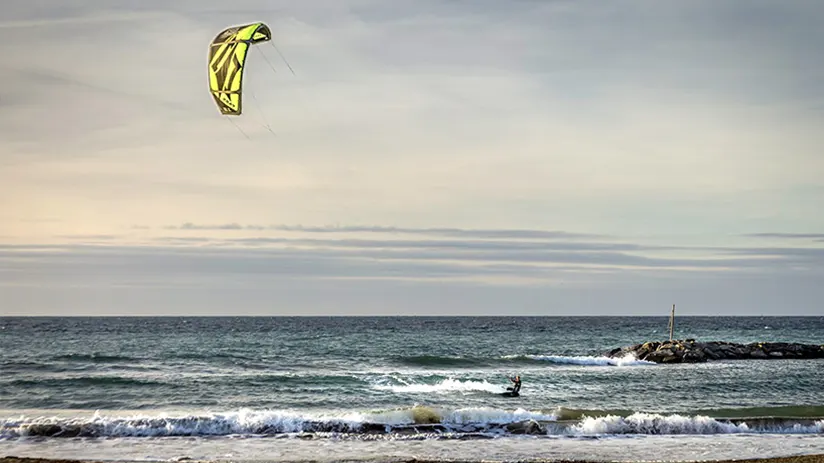
Another excellent adventure option is to try paragliding in Paracas to see this beautiful reserve from another perspective. Usually, the flights begin at 09:00 am and take 25 to 30 minutes to fly over the stunning reefs that the reserve has.
As the day goes on, the wind speed increases from 15 kph. to winds exceeding 50 kph. For beginners, it’s best to go paragliding in the morning. The afternoon is more suitable for experienced paragliders.
Paragliding flights typically begin near The Cathedral, a rock formation shaped like a tunnel that leads into the sea. This was destroyed by the 7.9-magnitude earthquake on August 15, 2007, with an epicenter in the sea. However, the Parapente flights still depart from the same point.
8. Surfing in front of a desert
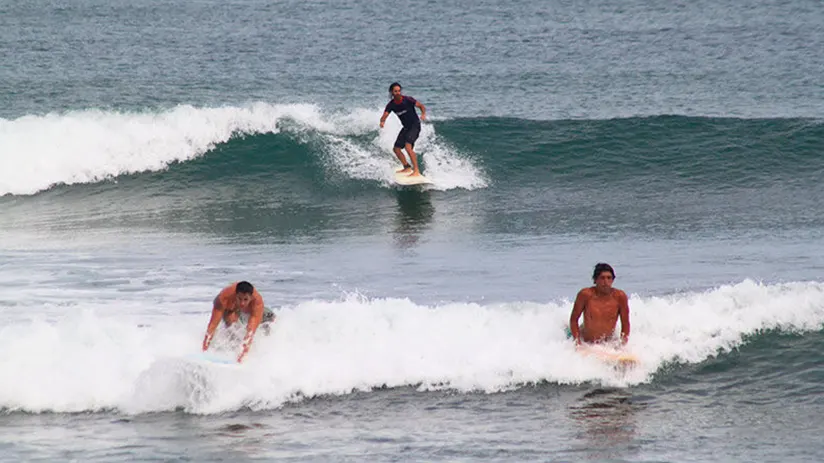
You can surf near a desert at San Gallán Island, which is great for surfers looking for big waves and exciting barrel opportunities. Besides being one of the few places where practicing surf in Paracas, the island is an authentic paradise. Small boats that depart from El Chaco town, the most tourist-friendly place in the National Reserve, provide access to it. El Chaco town lies just behind Paracas city.
9. Enjoy Huacachina oasis
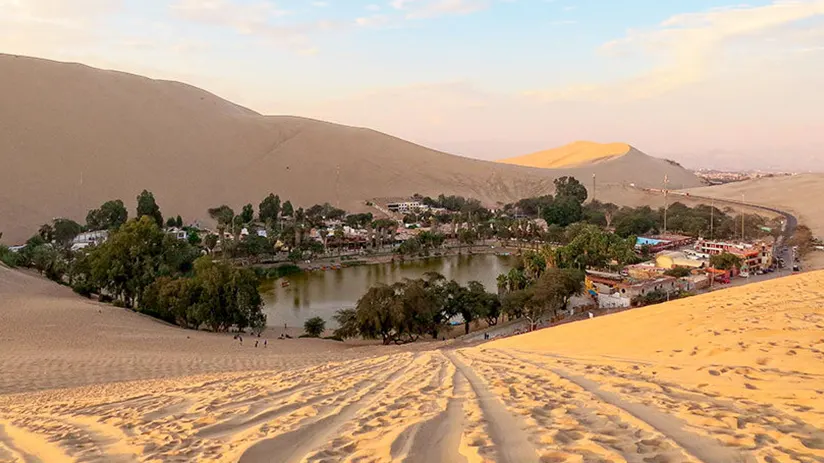
The Huacachina oasis is not part of the Paracas National Reserve. It is 74 kilometers to the east of it. Even visiting Huacachina is one of the most exciting things to do in the Paracas zone or surroundings. However, it is inevitable for those wanting a complete experience in Paracas.
As its name indicates, Huacachina is a beautiful oasis near many hotels, restaurants, and travel agencies. You can practice sandboarding and dune buggy riding in the dunes around the zone. Another great place to visit is the National Reserve.
10. Chandelier geoglyph
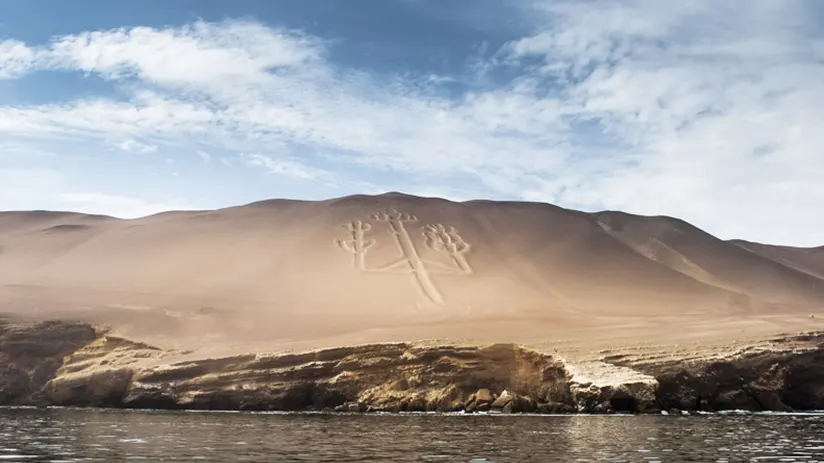
The Candelabro, also known as the Chandelier, is a large drawing found on a sand dune on the northern coast of the Paracas peninsula. The structure measures 170 meters in length and features engravings 1.20 meters deep. Its purpose, form, and method of making remain a total mystery.
The only known fact is that someone made it 2500 years ago. Some theories suggest that pirates created geoglyphs to signal and locate treasure. Another theory says that it may have been a form of daylight for ancient Peruvian navigators.
The latest theory, the most widely accepted, indicates that male astronomers from the Nazca Culture built this geoglyph. People associate the Constellation of the Southern Cross, also known as the Cross of the Navigators, with the geoglyph. This shows sailors in the Southern Hemisphere, where the South Pole is, helping them navigate during their journeys.
11. Explore the Julio C. Tello site museum
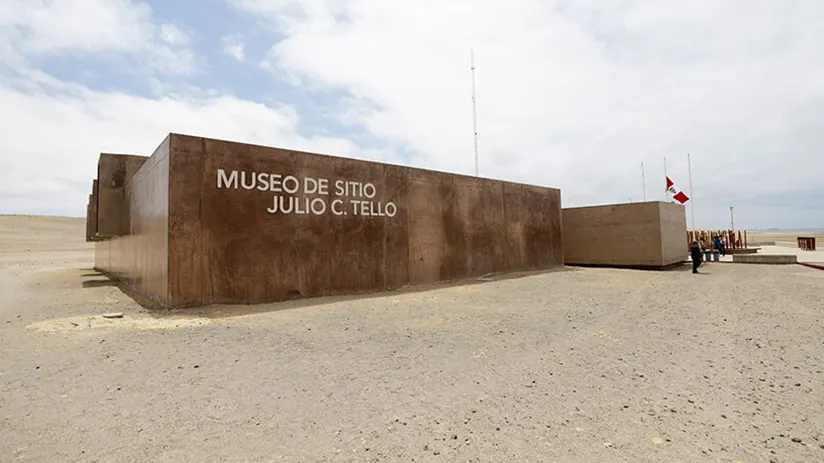
Inside the Julio C. Tello Site Museum, visitors can explore over 121 items from the Paracas culture, including ceramics, textiles, and utensils, ranging from the earliest to 200 AD.
The Peruvian archaeologist of the same name found them in the nearby local cemetery. The museum underwent remodeling from 2012 to 2016 due to the great 2007 earthquake, which destroyed the building.
In 2018, the Leading Culture Destinations Awards recognized it as the “Best New Museum in Latin America”. This is, without a doubt, the perfect place to introduce visitors to the Paracas world.
How to get to Paracas
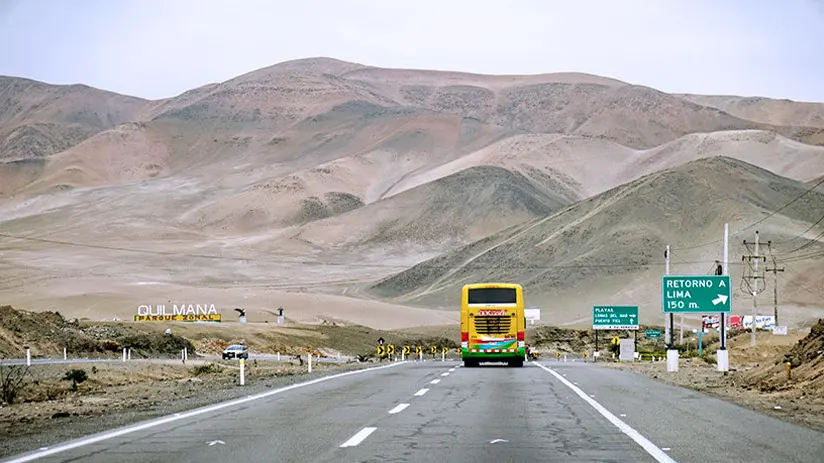
Whether you are looking for trips for couples options or a destination to relax, our list of the best things to do in Paracas will be perfect for you! But first, how to get there?
The best and cheapest option is to take a bus from Pisco or Ica to El Chaco in Paracas. El Chaco is the starting point for excursions to the Paracas and Ballestas Islands. It offers many options for luxury accommodation and dining.
Many safe bus companies provide transportation from popular places in Peru to El Chaco in Paracas.
- Cusco to El Chaco: Around 21 hours.
- Arequipa to El Chaco: Around 13 hours.
- Nazca to El Chaco: Around 5 hours.
- Ica to El Chaco: Around 2 hours.
- Lima to El Chaco: Around 4 hours.
Once you arrive in El Chaco, you will have all the Paracas National Reserve extended. But remember that more than 217,000 hectares of reserve exist, and experts do not recommend visiting it yourself.
Happily, many tour operators in the same El Chaco have experience in Paracas. Before arriving in Peru, you can hire a travel agency for help with your Paracas experience. Our team is happy to assist you.
What to bring
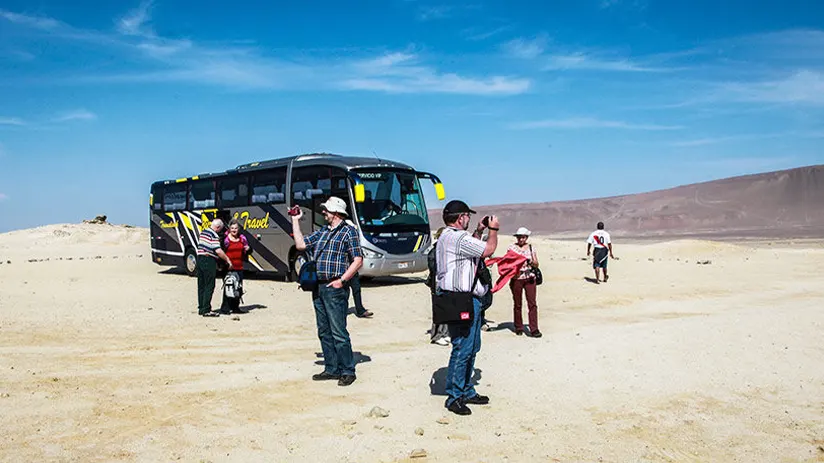
Once you know the fantastic activities and experiences offered in the National Reserve. You can consider what to bring on your Paracas tour. Generally, in the summer in Peru (November to April), the Paracas temperature tends to be hotter and drier.
Experts recommend wearing light clothing, such as shorts, polo shirts, a cap, sunglasses, and a windbreaker for gusts of wind and sand. In another sense. The temperature usually drops a bit in winter, so you should wear light trekking pants, a polo shirt, and a thicker jacket.
However, it is good to bear the following in mind:
- Shorts
- poles
- windbreaker
- Cap
- Sunglasses
- High spectrum sunscreen
- trekking shoes
- A good camera
- canteen with water
When to visit
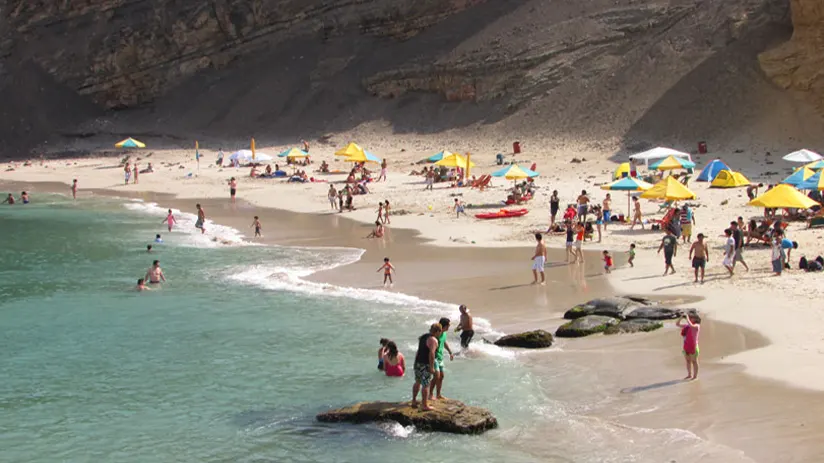
Paracas is a Peruvian destination that can be visited at any time of the year. Its average hot temperature with little humidity makes it perfect for a last-minute vacation.
In other words, there is not an adequate season to visit it. Peruvians usually see it in Summer (November to April) and during national holidays (July 28th and 29th). These days are in perfect blue, with fewer clouds, hard rays of the sun, and fresh breezes.
Where to stay
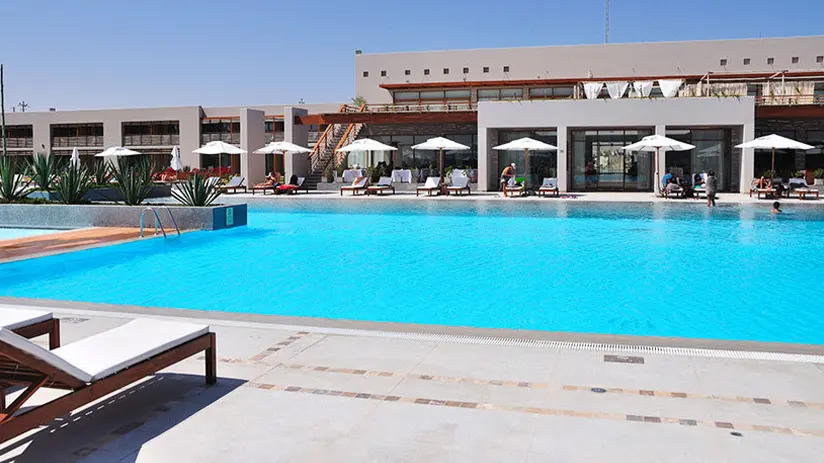
El Chaco is the tourist center of Paracas and where most travelers stay. Despite being a small town, El Chaco. Offers an impressive selection of accommodations and the best hotels in Paracas, too.
Even those travelers on a budget will find a variety of backpacker hostels. But if you intend to stay within the Paracas National Reserve, there are a few options.
- Paracas Luxury Collection: Hotel 5-star located in the same El Chaco. It is also operated by the North American company Marriott Hotels. Paracas w/n.
- Double Tree Resort by Hilton Paracas: Another 4-stars hotel located in Lot 30-34 Ur, Ica, Paracas.
- La Hacienda Bahia Paracas: Hotel 4-Stars located in Urb. Santo Domingo Lot 25 Paracas, Pisco, Peru.
However, if you want to stay in the same National Reserve of Paracas, there is an option. Inti Mar is the only bed-and-breakfast rustic lodge in the National Reserve. You can find it just opposite El Chaco. People usually pack it on the other side of the bay. So, take precautions.
“THE DESERT IS A NATURAL EXTENSION OF THE INNER SILENCE OF THE BODY”
As you can see, visiting Paracas National Reserve is entirely worth it. It will depend a lot on what you want to enjoy and experience. There are many options, from cycling to various adventure activities. With so much to discover in this corner of Peru, you won’t want to miss out on this beautiful reserve.
We hope we have been helpful, together with the experts from Machu Travel Peru. If you want to know more about our tours of the reserve, you can consult with our advisors. They will be more than happy to help you fulfill the trip of your dreams.
